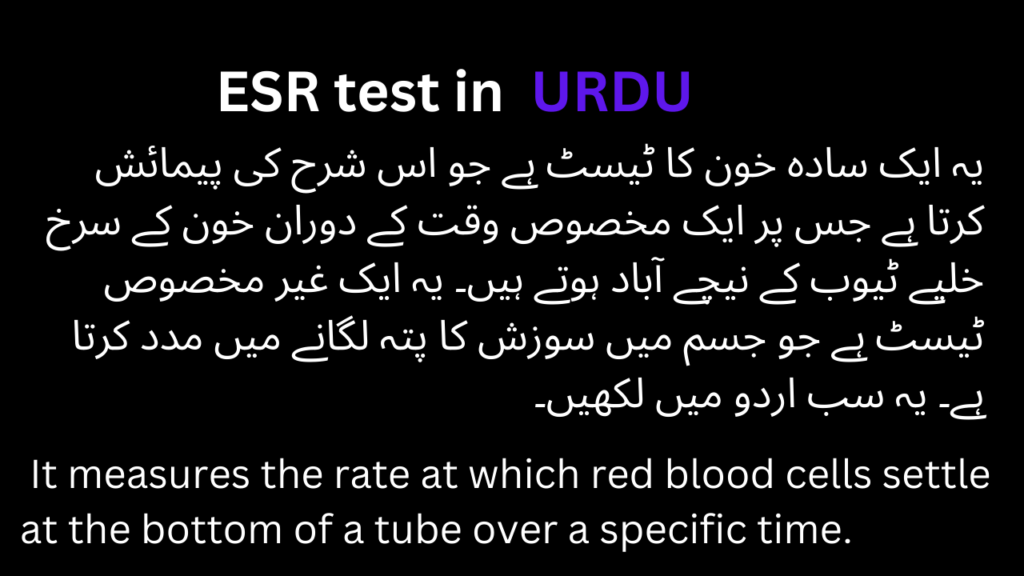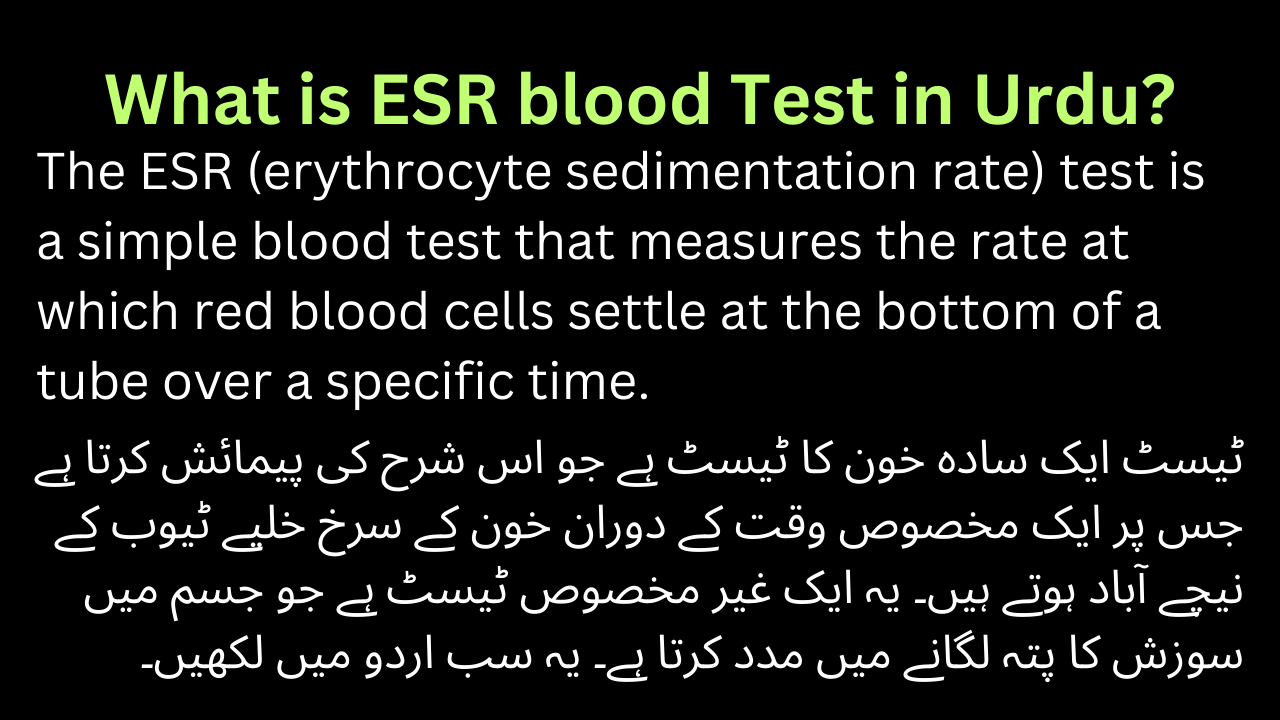The ESR (erythrocyte sedimentation rate) test is a simple blood test that measures the rate at which red blood cells settle at the bottom of a tube over a specific time. It is a non-specific test that helps to detect inflammation in the body.

ESR test principle
The ESR test is based on the principle that during inflammation or infection, certain proteins, such as fibrinogen, in the blood plasma increase. These proteins cause red blood cells to clump together, making them heavier.
When a blood sample is placed in a vertical tube, the heavier clumped red blood cells settle faster than normal, and the rate of sedimentation is measured.
ESR test procedure
- Blood Collection: A small sample of blood is typically drawn from a vein in the arm using a needle.
- Dilution: The blood is mixed with an anticoagulant to prevent clotting and then diluted with a solution.
- Vertical Tube: The diluted blood is placed in a tall, thin tube, and the tube is placed vertically.
- Observation: The rate at which the red blood cells settle to the bottom of the tube is measured over a specified time, usually one hour.
- Measurement: The result is reported as the distance in millimeters that the red blood cells have fallen within the tube during the designated time.
Erythrocyte sedimentation rate test range
- For men under 50 years: 0-15 mm/h
- For women under 50 years: 0-20 mm/h
- For individuals over 50 years: The upper limit may be slightly higher.
Erythrocyte sedimentation rate test indications
- Inflammatory Conditions: The ESR test is commonly used to detect and monitor inflammatory conditions, such as rheumatoid arthritis, lupus, and vasculitis.
- Infection: Elevated ESR levels may be indicative of an ongoing infection, though it is a non-specific marker.
- Autoimmune Diseases: Conditions where the body’s immune system attacks its tissues, like systemic lupus erythematosus (SLE) or autoimmune thyroiditis.
- Certain Cancers: ESR levels may be elevated in some cancers, but it is not a specific diagnostic tool for cancer.
- Monitoring Disease Activity: ESR can be used to monitor the activity of certain chronic diseases and assess the effectiveness of treatment.
- Temporal Arteritis: ESR is often used as a diagnostic tool for conditions like temporal arteritis.
When ESR test increase?
ESR test increase in the following cases.
- Inflammatory Conditions:
- Rheumatoid arthritis
- Systemic lupus erythematosus (SLE)
- Ankylosing spondylitis
- Vasculitis
- Infections:
- Bacterial infections
- Viral infections
- Tuberculosis
- Autoimmune Diseases:
- Giant cell arteritis
- Polymyalgia rheumatica
- Temporal arteritis
- Certain Cancers:
- Multiple myeloma
- Lymphoma
- Leukemia
- Chronic Kidney Disease:
- ESR can be elevated in advanced stages of chronic kidney disease.
- Inflammatory Bowel Disease:
- Crohn’s disease
- Ulcerative colitis
- Tissue Injury and Necrosis:
- Severe burns
- Trauma
